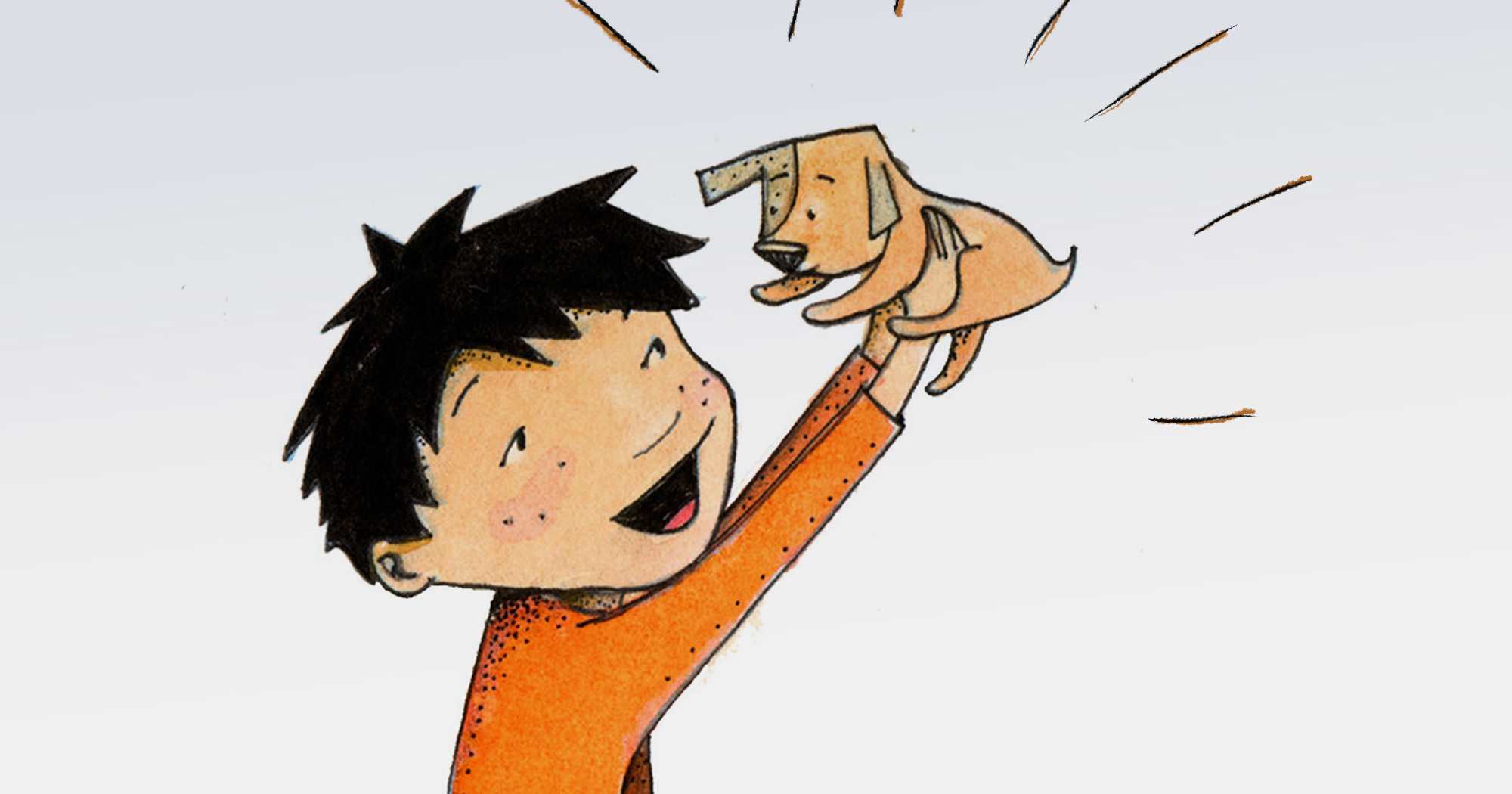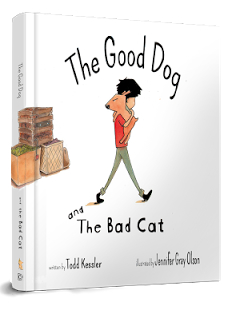Blue's Clues Creator Just Figured Out the Secret to Long-Form Picture Books

Whoever says writing a children’s picture book is easy has either never written a good one or has never read a book aloud to a child. Too many show cute widdle anthropomorphic animals and feature sing-song rhyme schemes but are tone-deaf when it comes to what kids will actually pay attention to and what the grownups reading them will be able to stomach.
Todd Kessler knows, more than most, how to really get kids’ attention. He created the popular preschool children’s show Blue’s Clues, which defied conventional wisdom and kept kids’ attention for a full half-hour of a single story line. Now, he’s looking to do for books what he did for preschool TV, with his The Good Dog series of picture books that are both long form and engaging for kids and their grownups. What’s the secret formula for precious attention spans? I asked him in the interview below. Also, what is it with kids’ books and dogs?
Todd Kessler
When Blues Clues first aired, many parents were baffled at how/why this seemingly simple program grabbed their kids’ attention. How did you do it? Secret subliminal mind control?

Todd Kessler

There was absolutely nothing secret or subliminal about it. We simply sat down with kids and tried out our ideas with them. If you spend time with children and really listen to them, you gain a deeper understanding of how to engage them. The popular belief at the time was that preschoolers had “short attention spans,” and so any preschool TV program had to be in short segments no longer than three minutes each. But there was no real evidence to support this notion. I knew from my own experience that if you tell kids a really good story they will remain engaged for an extraordinary amount of time.
I developed Blue’s Clues as a continuous half hour narrative because I knew it would work. TV executives were sure it would fail. But Blue’s Clues tested with 20 percent higher attention than Sesame Street, so they had no choice but to air the program. The rest is history.
Picture books are getting shorter. From YouTube to Twitter, we’re all consuming our media in short bites these days. How can we expect our kids to look at any single book for an extended length of time?
Again, there is currently a lot of pop culture buzz about “short bites” and how this is creating an epidemic of “short attention spans” in our children, but I have yet to see any scientific evidence that support these notions. The cold hard fact is that kids still love good stories.
In the ’90s we used to hear that sales of young adult fiction were tanking because young people were spending all their time with MTV and video games. It turned out that the problem was simply that the publishing industry had lost touch with their audience. Once Harry Potter was published and other books followed with dynamic, complex, vibrant narratives which caught the attention of young people, everything changed. Today the YA section of the bookstore is the largest and busiest, and even adults are reading YA. Myth busted.
The best kids’ books are also ones that are fun for adults to read. How do you achieve this “layered” approach?
The rule is this: add content which adults will appreciate as long as you never compromise the narrative continuity of your child-relatable narrative. Kids actually like it if there are details or moments which they don’t quite yet grasp. They appreciate the challenge and can always roll with it. As long as the primary story doesn’t go off on a tangent, they will remain engaged.
Could you get away with your formula with a bigger publisher, or is a smaller indie like Coralstone Press more likely to “get it”?
The publishing industry is going through a tumultuous transition and old formats and methods of distribution are being questioned. There are a lot of innovative new publishers and writers emerging. Any time an industry is in disarray I think is a great opportunity to jump in and reinvent things.
What is it about dogs?
Dogs and young children share a lot of attributes. They’re small. They have a strong desire to please adults. They love attention. They love to learn. They are sometimes good and sometimes bad. They don’t have a lot of verbal skills. They have a problem with impulse control. They love to eat. They love to run around and play. So dogs are generally ideal characters for a young audience to identify with.

Howard Lovy is executive editor at Foreword Reviews. You can follow him on Twitter @Howard_Lovy
Howard Lovy
